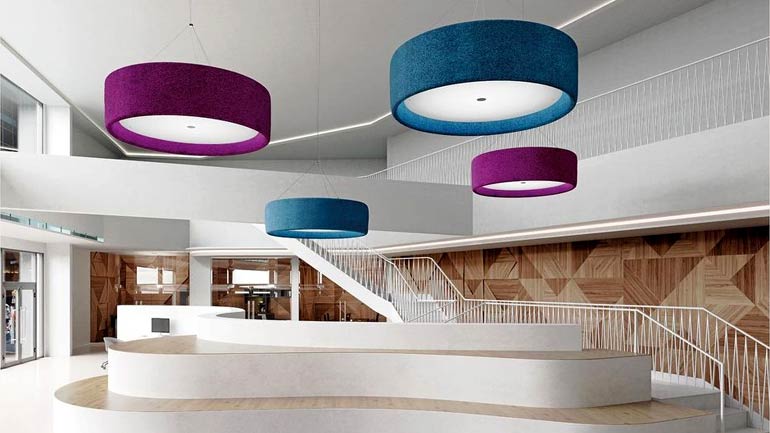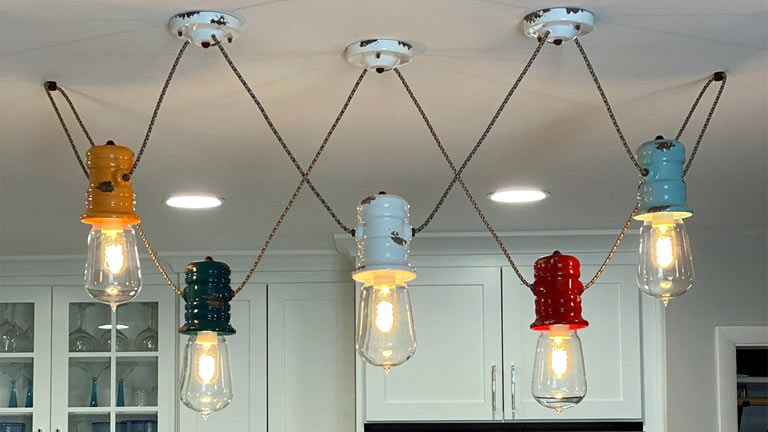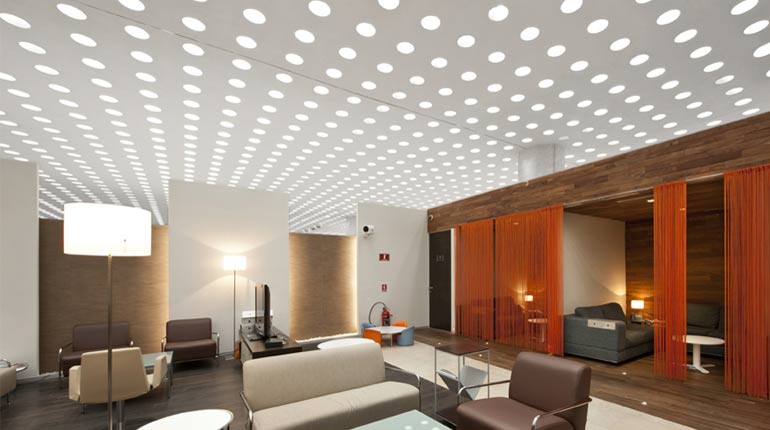
When we talk about interior or exterior design, we usually prioritize the visual elements. However, a space feels a lot more welcoming when it’s easy on the ears.
This is especially true in an office setting which requires a quiet and comfortable environment. Open-plan offices are built for better collaboration but are noisy.
That’s where acoustics play an important role! A recent analysis shared by Precision Consulting reveals that the physical environment significantly impacts an employee’s ability to focus.
Well-planned spaces have a positive impact on employee health and engagement. Hence, modern offices are designed for functionality, collaboration, and functionality. This makes it prone to uncomfortable noise levels that contribute to employee stress and negatively impact overall productivity.
No wonder, acoustics control has grown in popularity over the years. Most building rating systems, namely LEED and WELL are prioritizing acoustics in interior design.
In this post, we will focus on a critical aspect of acoustic solutions, namely acoustic lighting.
Significance of Acoustic Lighting
Office environments often present acoustic challenges because of poor physical layout and the use of inappropriate building materials that either fail to absorb sound or exacerbate it. The increasing demand for quieter workspaces has given rise to acoustic luminaires that are proven to reduce noise and promote a productive work environment.
These luminaires can be surface mounted, recessed, or suspended, generally above the line of sight. The fixtures integrate a soft and porous material, such as felt or recycled polyester or wool that is known to possess excellent sound-absorbing properties.
A few lighting companies have designed revolutionary luminaires that hold acoustical material. These lighting products are essentially LED lighting fixtures that are wrapped in acoustic materials like foam or wool.
Most acoustic fixtures are equipped with PET acoustic panels (100% non-woven polyester fiber) that possess a sound-absorbing factor of 0.6. When integrated with an LED light source, this material can easily absorb high and medium sound frequencies. Further, the application of commercial LED lighting fixtures allows lower power consumption, thus reducing utility costs.
Acoustic lights are available as table lamps, wall sconces, pendant lights, recessed lamps, and ceiling lights to create a space that’s peacefully productive and well-lit.
How Does Acoustic Lighting Work in Modern Office Settings
While focused working in open workplaces can be achieved in 40-50 dB noise, a regular workplace generates over 65dB noise. Moreover, a typical workday cycle between collaborative and solo working. These factors result in a poor acoustic environment at offices.
So, how can acoustic lighting address this issue?
It Uses Materials That Maximize Acoustic Performance
Most of the acoustic lighting fixtures available in the market use sustainably sourced materials. These are made using 100% sound-absorbing recyclable material that allows absorption of up to 70% of the reverberated sound.
Simply put, the materials used lead to a reduction in the noise reduction coefficient (NRC) of 0.7.
It Is Out of the Direct Visual Field
The best way to control the acoustics of a space is to avoid the reflection of sound. Being out of the direct visual field, acoustic lighting is out of the direct visual field and the illumination is positioned to aid acoustics control.
These lights offer opportunities for designers to add back sound-absorbing materials like wool while boosting the overall aesthetics of a space.
Its Placement Aids in Acoustics Control
Sound waves tend to get trapped between multiple sound-absorbing surfaces and the building structure. Effective acoustic management involves absorbing, blocking, and covering up (ABC).
Acoustic lighting fixtures are mostly placed close to walls and ceilings to facilitate the sound-absorbing effect. These sound absorbers reduce reverberation after their source has stopped, thereby offering adequate acoustic comfort.
It Enhances the Performance of Other Sound-Absorbing Solutions
Offices and other public spaces use a variety of acoustic solutions (ceiling or wall treatments) to improve the acoustics of the space. Acoustic lamps applied along with these solutions can boost the overall sound absorption of the functional area.
The greater the surface area of the sound-absorbing material the better is the reduction of sound reverberation. Hence, acoustic lighting enhances the efficacy of the other acoustic elements applied to the space.
It Balances Acoustics and Aesthetics
One of the biggest challenges in incorporating sound-absorbing materials like felts, fabrics, foams, or pulps into a space is to balance acoustics with aesthetics. The luminaire design should be effective enough to create ideal illumination and noise reduction while boosting the workspace’s aesthetic appeal.
Acoustic lighting alleviates noise pollution in densely populated offices without obstructing the architectural elements in the space. Hence, instead of using a sound-deadening panel that could ruin the view of a decorative wall, designers are going for acoustic lighting that leaves the focal points of space alone.
In fact, these days we see stunning acoustic lighting fixtures that can become the focal points.
Modern acoustic lighting makes it possible for interior designers and architects to combine high-performance lighting with acoustic technology. Most of these fixtures are designed to reduce noise in open areas while offering functional illumination. They are available in a wide variety of color combinations and design trends to adapt to the existing decor.
Summing Up
Acoustic control is often given little attention when designing a workplace. Most designers tend to prioritize functionality and aesthetics over acoustic comfort.
However, poor acoustics contributes to low productivity and impacts the overall well-being of employees.
Acoustic lighting has a huge role to play in creating a productive work environment. Hence, an increasing number of lighting manufacturers are designing fixtures that can hold that acoustic material and reduce unwanted noise and distractions.
More and more workspaces are riding on the open-concept bandwagon because they are ripe for collaboration and flexibility. Hence, in the future, we can expect a surge in demand for acoustic lighting.




